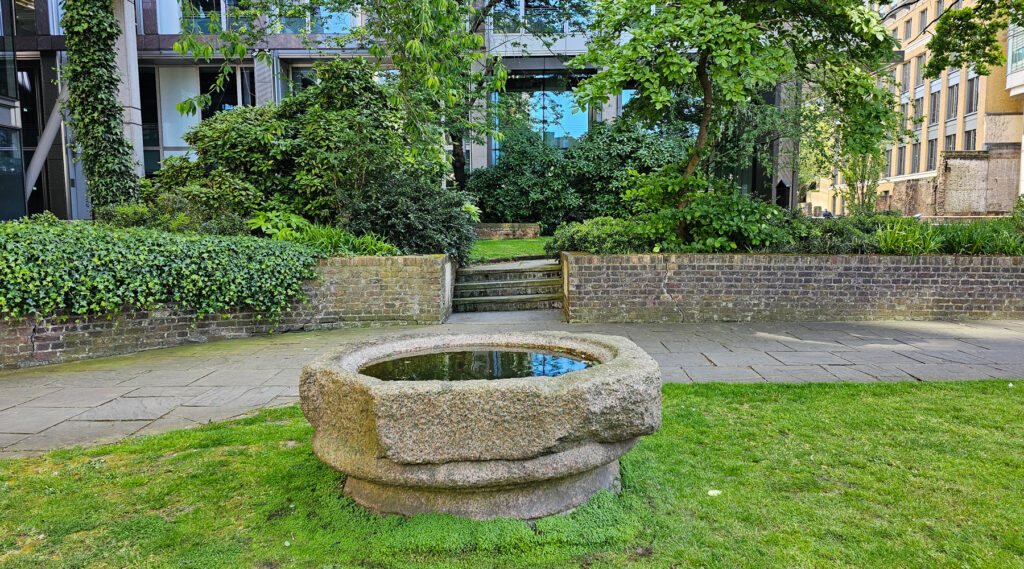This is a pocket park that sits next to the busy London Wall road, but still manages to look rather pleasant to sit in despite its location.
From the name you’ve probably already realised, it’s the site of a former church that John Stow described as “a small thing, and without any note-worthie monuments”. The first reference to the church, in the twelfth century, refers to it as “St Olave de Mukewellestrate”, and is likely named after King Olaf, later Saint Olaf who was popular among early Scandinavian immigrants.
The church was rebuilt in 1609 and 1662, before being destroyed in the Great Fire of London in 1666, and maybe thanks to its lack of size or decoration, was never rebuilt.
The churchyard has also been an empty plot of land ever since.
Although the land around it was heavily developed in subsequent centuries, the whole area was cleared by the effects of WWII.
As part of the fortunately never completed plans for a major road network around the edges of the City of London, a lot of the older streets in this part of London were not rebuilt as the four-lane London Wall road was built instead.
Where the pocket park had been nestled within an area of small narrow lanes and next to a mini-courtyard, it’s now next to a mini-motorway instead.
The main garden is raised up, as burial sites tend to be, and you can spy a few remaining gravestones under the trees and bushes. Quite a few benches are around the edges of the raised bed if you want to take a break.
One charming little feature is a small curving path on the raised bed that just about snakes through some low planting and it’s rather fun to walk along for the few seconds it takes to walk from end to end.
There’s also what looks like a very large stone font in the garden, although its true use or function has long since been lost.
The area has local fame, as there’s a plaque on the wall noting that William Shakespeare lived nearby. He lived on Silver Street in around 1604, at the house of the Mountjoys, a French Huguenot family whom he had known for about a decade or so at the time. The residence there is significant because a lawsuit filed in 1612 while he lived there contains one of the few surviving copies of Shakespere’s signature.
There is a conjecture that he lived in a house on the corner about 50 yards to the east of the churchyard. Silver Street itself was lost in the post-war rebuilding, but ran eastwards from the corner of the churchyard, slightly to the south of where London Wall is today.
Also look next to the steps for a stone plaque decorated with a skull and crossbones – which was installed to mark the site of the lost church.
It reads: THIS WAS THE PARISH CHURCH / OF ST OLAVE SILVER STREET / DESTROYED IN THE DREADFULL / FIRE IN THE YEAR 1666
Talking of bones, the churchyard is also where criminals were buried after they had been dissected by the early anatomists of the Barber-Surgeons’ Company, who were granted the bodies of four criminals per year to study.
Enjoy your lunch.












Leave a Reply